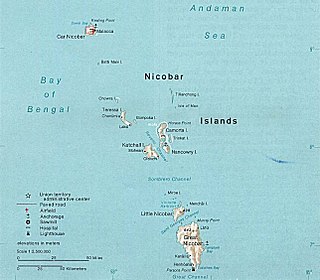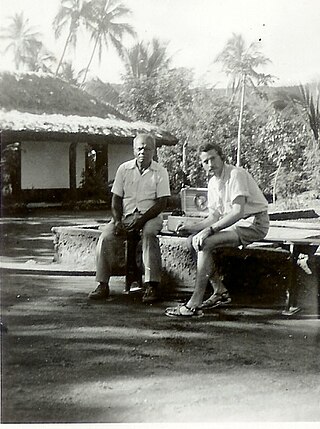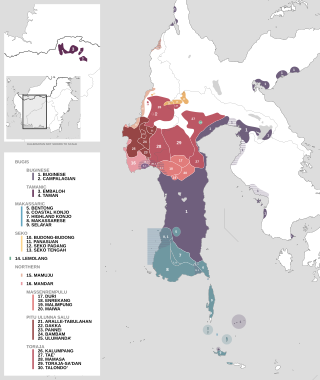List of meetings
A full list of meetings, including full conferences, workshops, and other meetings, is as follows.
| International Conference on Austronesian Linguistics (ICAL) | |
|---|---|
| Status | Active |
| Frequency | 3–4 years |
| Years active | 1974–present |
The International Conference on Austronesian Linguistics (ICAL) is an academic conference that focuses on research in Austronesian languages and linguistics. It is held every three to four years. [1]
A full list of meetings, including full conferences, workshops, and other meetings, is as follows.
In linguistics, grammatical number is a feature of nouns, pronouns, adjectives and verb agreement that expresses count distinctions. English and many other languages present number categories of singular or plural, both of which are cited by using the hash sign (#) or by the numero signs "No." and "Nos." Some languages also have a dual, trial and paucal number or other arrangements.

The Austronesian languages are a language family widely spoken throughout Maritime Southeast Asia, parts of Mainland Southeast Asia, Madagascar, the islands of the Pacific Ocean and Taiwan. They are spoken by about 328 million people. This makes it the fifth-largest language family by number of speakers. Major Austronesian languages include Malay, Javanese, Sundanese, Tagalog, Malagasy and Cebuano. According to some estimates, the family contains 1,257 languages, which is the second most of any language family.

The Papuan languages are the non-Austronesian languages spoken on the western Pacific island of New Guinea, as well as neighbouring islands in Indonesia, Solomon Islands, and East Timor. It is a strictly geographical grouping, and does not imply a genetic relationship.
Linguolabials or apicolabials are consonants articulated by placing the tongue tip or blade against the upper lip, which is drawn downward to meet the tongue. They represent one extreme of a coronal articulatory continuum which extends from linguolabial to subapical palatal places of articulation. Cross-linguistically, linguolabial consonants are very rare. They are found in a cluster of languages in Vanuatu, in the Kajoko dialect of Bijago in Guinea-Bissau, in Umotína, and as paralinguistic sounds elsewhere. They are also relatively common in disordered speech, and the diacritic is specifically provided for in the extensions to the IPA.

The Nicobarese languages or Nicobaric languages, form an isolated group of about half a dozen closely related Austroasiatic languages, spoken by most of the inhabitants of the Nicobar Islands of India. They have a total of about 30,000 speakers. Most Nicobarese speakers speak the Car language. Paul Sidwell (2015:179) considers the Nicobarese languages to subgroup with Aslian.

The Philippine languages or Philippinic are a proposed group by R. David Paul Zorc (1986) and Robert Blust that include all the languages of the Philippines and northern Sulawesi, Indonesia—except Sama–Bajaw and the Molbog language—and form a subfamily of Austronesian languages. Although the Philippines is near the center of Austronesian expansion from Taiwan, there is little linguistic diversity among the approximately 150 Philippine languages, suggesting that earlier diversity has been erased by the spread of the ancestor of the modern Philippine languages.
Tidore is a language of North Maluku, Indonesia, spoken by the Tidore people. The language is centered on the island of Tidore, but it is also spoken in some areas of the neighbouring Halmahera. Historically, it was the primary language of the Sultanate of Tidore, a major Moluccan Muslim state.
Andrew Kenneth Pawley, FRSNZ, FAHA, is Emeritus Professor at the School of Culture, History and Language of the College of Asia and the Pacific at the Australian National University.

Robert A. Blust was an American linguist who worked in several areas, including historical linguistics, lexicography and ethnology. He was Professor of Linguistics at the University of Hawaiʻi at Mānoa. Blust specialized in the Austronesian languages and made major contributions to the field of Austronesian linguistics.

George William Grace was an American linguist who specialized in historical and comparative linguistics, ethnolinguistics, and Austronesian languages, especially the Oceanic languages of Melanesia. He joined the Department of Linguistics at the University of Hawaiʻi at Mānoa in 1964, serving three years as chair (1966–1969) and three decades as editor of Oceanic Linguistics (1962–1991), a journal he founded while teaching anthropology at Southern Illinois University (1960–1964).
Bodish, named for the Tibetan ethnonym Bod, is a proposed grouping consisting of the Tibetic languages and associated Sino-Tibetan languages spoken in Tibet, North India, Nepal, Bhutan, and North Pakistan. It has not been demonstrated that all these languages form a clade, characterized by shared innovations, within Sino-Tibetan.
The Gorontalo–Mongondow languages are a group of Austronesian languages spoken in northern Sulawesi, Indonesia.

The South Sulawesi languages are a subgroup of the Austronesian language family. They are primarily spoken in the Indonesian provinces of South Sulawesi and West Sulawesi, with a small outlying pocket in West Kalimantan.
Ternate is a language of northern Maluku, eastern Indonesia. It is spoken by the Ternate people, who inhabit the island of Ternate, as well as many other areas of the archipelago. It is the dominant indigenous language of North Maluku, historically important as a regional lingua franca. A North Halmahera language, it is unlike most languages of Indonesia which belong to the Austronesian language family.
There have been various classification schemes for Southeast Asian languages.
Fossilized affixes abound in Austronesian languages.
Tondano is an Austronesian language spoken in the Tondano area of northeast Sulawesi, Indonesia. It is most similar to Tombulu and to Tonsea.
Rongga is a language of central Flores, in East Nusa Tenggara Province, Indonesia. Rongga is closely related to Ngadha, and more distantly to Manggarai.
The East Asian languages are a language family proposed by Stanley Starosta in 2001. The proposal has since been adopted by George van Driem and others.
The Central Cordilleran languages are a group of closely related languages within the Northern Luzon subgroup of the Austronesian language family. They are spoken in the interior highlands of Northern Luzon in the Cordillera Central mountain range.